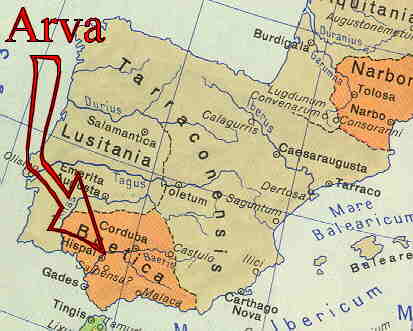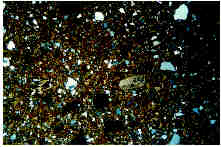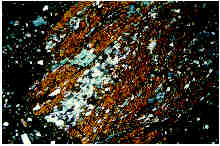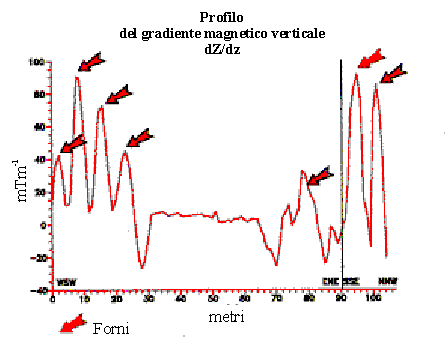 |
MAGNETOMETRIC PROSPECTION IN ARVA |
 |
MAGNETOMETRIC PROSPECTION IN ARVA |
| Arva is located halfway between Seville and Cordoba, on the Guadalquivir riverbanks. The remains of Municipium Flavium Arvense (Alcolea del Río, Seville, Spain) were first discovered in the middle of eighteenth century. G. Bonsor undertook some excavation campaigns at the end of nineteenth century, though no information is left from this initial intervention. The research resumed with J.Remesal, who has directed excavation campaigns from 1988 to 1995. |  |
The importance of Arva lies on its ancient city centre, where both the urbanism evolution of the city and development of the nearby industrial area can be thoroughly studied. Moreover, the remains of many amphora kilns, in which the Dressel 20 amphorae were produced to carry Baetican olive-oil in Roman times, are still well-preserved today in the industrial area.
The study of the trade of baetican olive-oil by its containers is one of the most important scopes of research on ancient economy. The universities of Southampton (England), Lyon III (France) and Bodendenkmalamt Baden-Württemberg (Stuttgart, Germany) collaborate in this project. Nowadays the research is being delayed because of the few excavations programme in place. The study is justified because of the features of the Roman city of Arva. According to the geophysic surveys carried out a whole programme of excavations was set up.



Sample F1 (Nicols X,20x). Usual mixture of an oven. Materials used in the mixture are heterogeneos. It can be seen: quartzite, metamorphic rocks and calcareus fragments Sample F2 (Nicols X, 20x). Usual mixture of an oven. It can be seen vegetable inclusions eliminated with combustion with crystals of secundary calcite of new formation. Sample F1 (Nicols X,20x) metamorfic rock, inclusions (metagranite), usual in the area, found in the mixture.
X-difractogram from the vault of one oven. There’s no ceramic mineral (in F1 and F2)
because of the high temperatures inside ovens.
Different magnetic surveys have been undertaken in order to identify the remains of the amphora kilns, where Baetican amphorae were produced. In the study area, two workshops and an overwhelming number of amphora fragments were found. This kind of survey is the most suitable to identify archaeological ceramic remains as pottery and kilns, due to the high contrast of magnetic susceptibility with regards to the nearby soils. This susceptibility is mostly due to the presence of ferrous magnetic, which are materials of synthesis such as ferrous silicates (galetines, diopsites...); minerals that record the direction of geomagnetic field.
The possibility of identifying the geomagnetic field is basic in archaeological research in order to detect kilns since they record the geomagnetic polarity when cooling. While pottery or sherds generally change their position when they are completely cold, kilns keep their geomagnetic position of the last moment of firing. Magnetic areas were determined thanks to the proton magnetometer Scintrex Geometrics G856.

Map of the magnetic vertical
gradient d2/dz
In order to measure and keep in memory the intensity values of the magnetic fields, sensors were placed at a distance of metre. The lower sensor was placed l,3 m over the ground. Measurements were taken in an hectare at intervals of one metre, along a profile with acimut N245. As a result, the map of differential magnetic field shows a gradation of 15ONTM-1 in relation with the two known kilns, other five areas with a similar profile can also be seen, this areas can be understood as buried kilns (see profile).